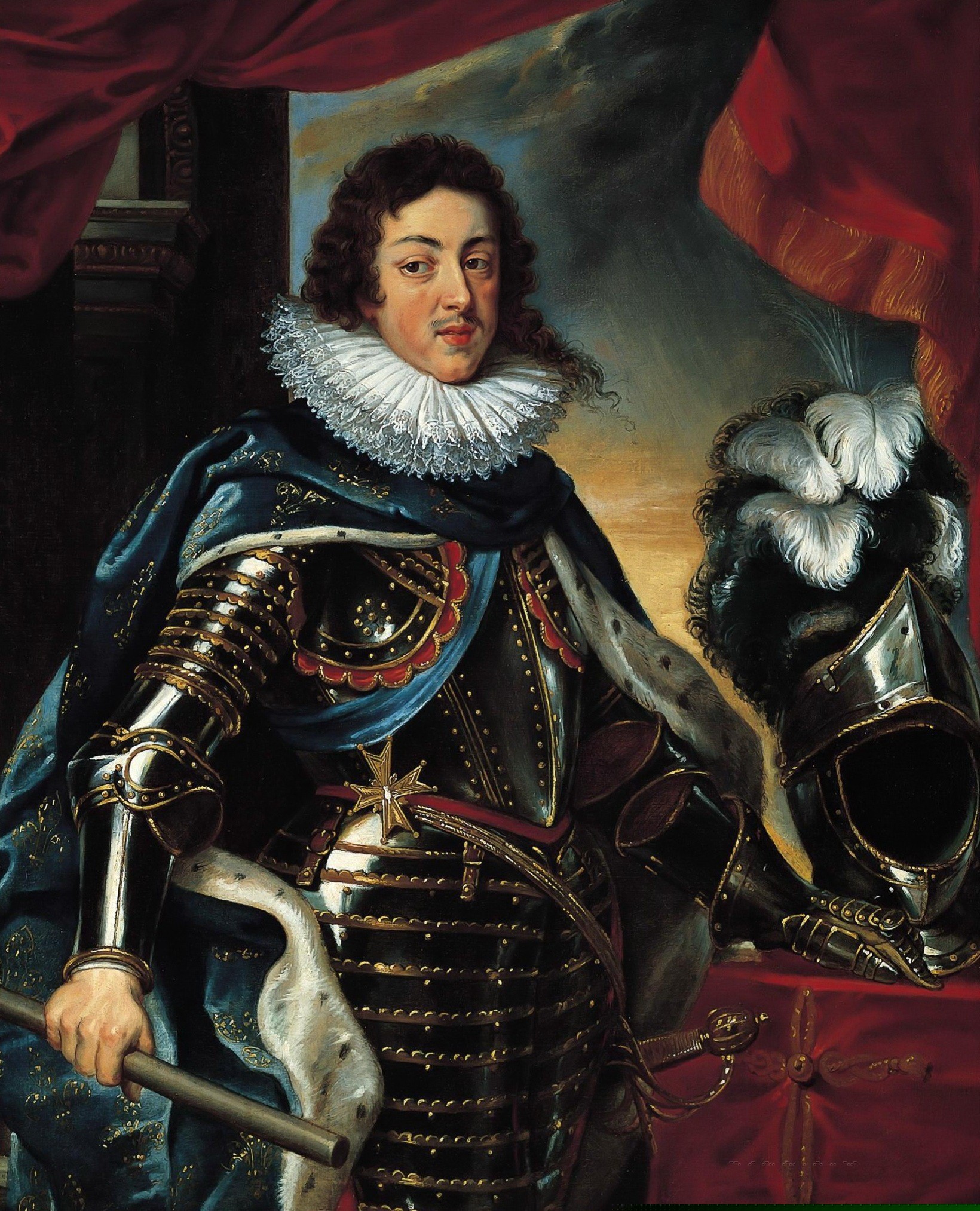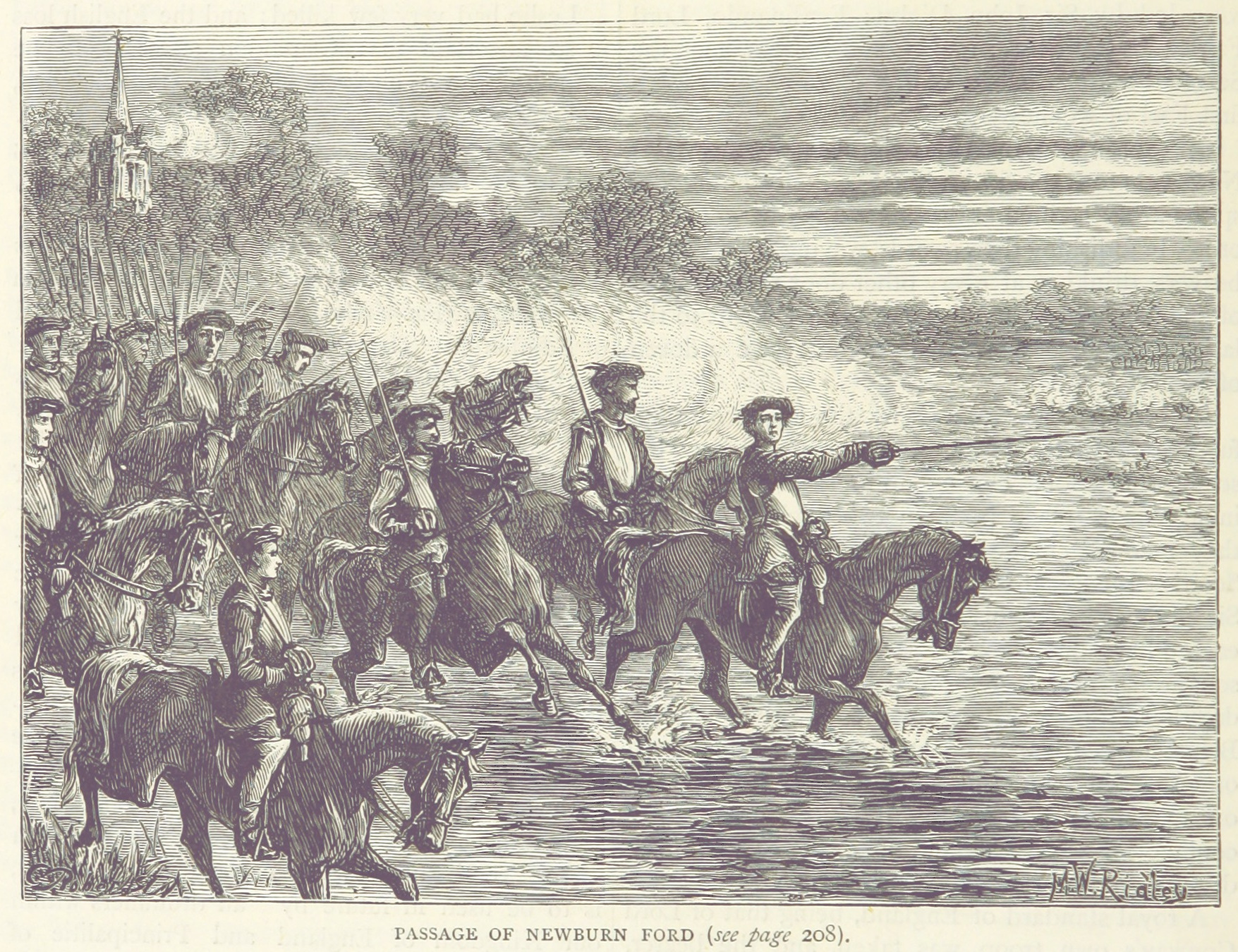|
Pierre Brûlart, Marquis De Sillery
Pierre Brûlart, Marquis de Sillery, Viscount Puisieux, Baron Grand Pressigny (1583 – 22 April 1640) served Louis XIII as joint Minister of Foreign Affairs and War from 1617 to 1626. Life Pierre Brûlart was born in 1583, son of Nicolas Brûlart, marquis de Sillery, 1544–1624 and Claude Prudhomme. His father was combined Secretary of State for War & Foreign Affairs from 1606 to 1616 and Chancellor of France 1607 to 1624. In 1613, his first wife, Magdalena de Neufville, died childless; his second marriage was to Charlotte d'Estampes (ca. 1597–1677) in 1615. They had seven children who survived to adulthood; Charlotte 1619–1697, Roger Louis 1619–1691, Nicolas (died after 1677), Claude, Marie Eléonor (died 1687), Françoise and Eléonor Adam (died 1699). As was then common, only Charlotte and Roger Louis married and the other five entered religious orders. Marie Eléonor became Abbess of the Benedictine convent founded at Avenay by Bertha of Val d'Or at the end of the ... [...More Info...] [...Related Items...] OR: [Wikipedia] [Google] [Baidu] |
Cardinal Richelieu
Armand Jean du Plessis, 1st Duke of Richelieu (9 September 1585 – 4 December 1642), commonly known as Cardinal Richelieu, was a Catholic Church in France, French Catholic prelate and statesman who had an outsized influence in civil and religious affairs. He became known as the Red Eminence (), a term derived from the style of Eminence (style), Eminence applied to Cardinal (Catholic Church), cardinals and their customary red robes. Consecrated a bishop in 1607, Richelieu was appointed Secretary of State for Foreign Affairs (France), Foreign Secretary in 1616. He continued to rise through the hierarchy of both the Catholic Church and the French government, becoming a Cardinal (Catholic Church), cardinal in 1622 and Chief minister of France, chief minister to King Louis XIII, Louis XIII of France in 1624. He retained that office until his death in 1642, when he was succeeded by Cardinal Cardinal Mazarin, Jules Mazarin, whose career the cardinal had fostered. Richelieu became enga ... [...More Info...] [...Related Items...] OR: [Wikipedia] [Google] [Baidu] |
Champagne
Champagne (; ) is a sparkling wine originated and produced in the Champagne wine region of France under the rules of the appellation, which demand specific vineyard practices, sourcing of grapes exclusively from designated places within it, specific grape-pressing methods and secondary fermentation (wine), secondary fermentation of the wine in the bottle to cause carbonation. The grapes Pinot noir, Pinot meunier, and Chardonnay are used to produce almost all Champagne, but small amounts of Pinot blanc, Pinot gris (called Fromenteau in Champagne), Arbane, and Petit Meslier are vinified as well. Champagne became associated with royalty in the 17th, 18th, and 19th centuries. The leading manufacturers made efforts to associate their Champagnes with nobility and royal family, royalty through advertising and packaging, which led to its popularity among the emerging middle class. Origins Still wines from the Champagne region were known before Middle Ages, medieval times. The Anci ... [...More Info...] [...Related Items...] OR: [Wikipedia] [Google] [Baidu] |
Secretaries Of State For War (France)
A secretary, administrative assistant, executive assistant, personal secretary, or other similar titles is an individual whose work consists of supporting management, including executives, using a variety of project management, program evaluation, communication, and/or organizational skills within the area of administration. There is a diverse array of work experiences attainable within the administrative support field, ranging between internship, entry-level, associate, junior, mid-senior, and senior level pay bands with positions in nearly every industry, especially among white-collar careers. The functions of a personal assistant may be entirely carried out to assist one other employee or may be for the benefit of more than one. In other situations, a secretary is an officer of a society or organization who deals with correspondence, admits new members, and organizes official meetings and events. But this role should not be confused with the role of an executive secret ... [...More Info...] [...Related Items...] OR: [Wikipedia] [Google] [Baidu] |
Foreign Ministers Of France
Foreign may refer to: Government * Foreign policy, how a country interacts with other countries * Ministry of Foreign Affairs, in many countries ** Foreign Office, a department of the UK government ** Foreign office and foreign minister * United States state law, a legal matter in another state Science and technology * Foreign accent syndrome, a side effect of severe brain injury * Foreign key, a constraint in a relational database Arts and entertainment * Foreign film or world cinema, films and film industries of non-English-speaking countries * Foreign music or world music * Foreign literature or world literature * ''Foreign Policy'', a magazine Music * "Foreign", a song by Jessica Mauboy from her 2010 album ''Get 'Em Girls'' * "Foreign" (Trey Songz song), 2014 * "Foreign", a song by Lil Pump from the album ''Lil Pump'' Other uses * Foreign corporation, a corporation that can do business outside its jurisdiction * Foreign language, a language not spoken by the people of a cer ... [...More Info...] [...Related Items...] OR: [Wikipedia] [Google] [Baidu] |
Brûlart Family
The Brûlart family was a family of the French nobility that was established in Paris, in the service of the Kings of France, which then relocated to Burgundy. It is said to have originated from Saint-Martin-d'Ablois, the Marne (department), Marne Departments of France, department in Châlons-en-Champagne, Champagne. The Brûlart family died out in 1793 upon the extinction of the Genlis branch. History The Brûlart family, formed three main branches: * Elder branch of the Lords of Sillery, Marne, Sillery, land created into a marquisate by Henry IV of France, Henry IV, extinct in 1770. * Younger branch of the Lords of Meursanges, La Borde, including Marie Brûlart, Marie Brûlart de La Borde, lady-in-waiting to Marie Leszczyńska, extinct after 1738. * Younger branch of the Lords of Villequier-Aumont, Genlis, extinct in 1793. Prominent members * Pierre Brûlart, seigneur de Genlis (–1608), a statesman and secretary of state. * Nicolas Brûlart de Sillery (1544–1624), diplom ... [...More Info...] [...Related Items...] OR: [Wikipedia] [Google] [Baidu] |
1640 Deaths
Events January–March * January 6 – The Siege of Salses ends almost six months after it had started on June 9, 1639, with the French defenders surrendering to the Spanish attackers. * January 17 – Action of 12–17 January 1640, A naval battle over control of what is now Brazil, between ships of the Dutch Republic and those of the Kingdom of Portugal, ends after five days of fighting with the Dutch driving the Portuguese away from the port of Recife. * February 9 – Ibrahim of the Ottoman Empire, Ibrahim I (1640–1648) succeeds Murad IV (1623–1640) as Ottoman Emperor, Sultan of the Ottoman Empire. * March 8–March 13, 13 – Siege of Galle (1640), Siege of Galle: Dutch troops take the strategic fortress at Galle, Sri Lanka from the Portuguese. April–June * April 13 – The Short Parliament assembles, as King Charles I of England attempts to fund the second of the Bishops' Wars. * May 5 – The Short Parliament is dissolve ... [...More Info...] [...Related Items...] OR: [Wikipedia] [Google] [Baidu] |
1583 Births
Events January–March * January 1 – The Duchy of Savoy adopts the Gregorian Calendar, replacing the Julian Calendar. * January 18 – François, Duke of Anjou, attacks Antwerp. * February 4 – Gebhard Truchsess von Waldburg, newly converted to Calvinism, formally marries Agnes von Mansfeld-Eisleben, a former canoness of Gerresheim, while retaining his position as Archbishop-Elector of Cologne. * February 7 – In the Netherlands, the Siege of Eindhoven by the Spanish Army begins.Mack P. Holt, ''The Duke of Anjou and the Politique Struggle During the Wars of Religion'' (Cambridge University Press, 2002) p.190 The walled city will fall in April. * March 10 (February 28 O.S.) – The ''Queen Elizabeth's Men'' troupe of actors is founded in England by order of Queen Elizabeth to Edmund Tilney, the royal Master of the Revels. April–June * April 9 – A Burmese Army force of 16,000 men, commanded by Thado Dhamma Yaza II of Prome and ... [...More Info...] [...Related Items...] OR: [Wikipedia] [Google] [Baidu] |
Minister Of Foreign Affairs (France)
The Ministry for Europe and Foreign Affairs (, MEAE) is the ministry of the Government of France that handles France's foreign relations. Since 1855, its headquarters have been located at 37 Quai d'Orsay, close to the National Assembly. The term Quai d'Orsay is often used as a metonym for the ministry. Its cabinet minister, the Minister of Europe and Foreign Affairs () is responsible for the foreign relations of France. The current officeholder, Jean-Noël Barrot, was appointed in September 2024. (For a brief period in the 1980s from 1984 to 1986, the office was titled Minister for External Relations.) In 1547, royal secretaries became specialised, writing correspondence to foreign governments and negotiating peace treaties. The four French secretaries of state where foreign relations were divided by region, in 1589, became centralised with one becoming first secretary responsible for international relations. The Ancien Régime position of Secretary of State for Foreign Aff ... [...More Info...] [...Related Items...] OR: [Wikipedia] [Google] [Baidu] |
Philip III Of Spain
Philip III (; 14 April 1578 – 31 March 1621) was King of Spain and King of Portugal, Portugal (where he is known as Philip II of Portugal) during the Iberian Union. His reign lasted from 1598 until his death in 1621. He held dominion over the Spanish Netherlands, Naples, Sicily, Sardinia, and the Duchy of Milan during the same period. A member of the House of Habsburg, Philip III was born in Madrid to King Philip II of Spain and his fourth wife, Anna of Austria (1549–1580), Anna of Austria. The family was heavily Inbreeding, inbred; Philip II and Anna were related both as uncle and niece, as well as cousins. Philip III married his cousin Margaret of Austria, Queen of Spain, Margaret of Austria, the sister of Ferdinand II, Holy Roman Emperor. Although known in Spain as Philip the Pious, his political reputation internationally has generally been negative. Historians C. V. Wedgwood, R. Stradling and J. H. Elliott have described him, respectively, as an "undistinguished and insi ... [...More Info...] [...Related Items...] OR: [Wikipedia] [Google] [Baidu] |
Anne Of Austria
Anne of Austria (; ; born Ana María Mauricia; 22 September 1601 – 20 January 1666) was Queen of France from 1615 to 1643 by marriage to King Louis XIII. She was also Queen of Navarre until the kingdom's annexation into the French crown in 1620. After her husband's death, Anne was regent to her son Louis XIV during his minority until 1651. Anne was born in Valladolid to King Philip III of Spain and Margaret of Austria, Queen of Spain, Margaret of Austria. She was betrothed to King Louis XIII of France in 1612 and they married three years later. The two had a difficult marital relationship, exacerbated by her miscarriages and the anti-House of Habsburg, Habsburg stance of Louis' first minister, Cardinal Richelieu. Despite a climate of distrust amidst the Franco-Spanish War (1635–1659), Franco-Spanish War and twenty-three years of childlessness in which she suffered five miscarriages, Anne gave birth to an heir, Louis, in 1638 and a second son, Philippe I, Duke of Orléan ... [...More Info...] [...Related Items...] OR: [Wikipedia] [Google] [Baidu] |
Infante
Infante (, ; f. ''infanta''), also anglicised as "infant" or translated as "prince", is the title and rank given in the Iberian kingdoms of Spain (including the predecessor kingdoms of Aragon, Castile, Navarre, and León) and Portugal to the sons and daughters (''infantas'') of the king, regardless of age, sometimes with the exception of the heir apparent or heir presumptive to the throne who usually bears a unique princely or ducal title.de Badts de Cugnac, Chantal. Coutant de Saisseval, Guy. ''Le Petit Gotha''. Nouvelle Imprimerie Laballery, Paris 2002, p. 303, 364–369, 398, 406, 740–742, 756–758 , . A woman married to a male ''infante'' was accorded the title of ''infanta'' if the marriage was dynastically approved (e.g., Princess Alicia of Bourbon-Parma), although since 1987 this is no longer automatically the case in Spain (e.g., Princess Anne d'Orléans). Husbands of born ''infantas'' did not obtain the title of ''infante'' through marriage (unlike most heredit ... [...More Info...] [...Related Items...] OR: [Wikipedia] [Google] [Baidu] |
Bernardo De Sandoval Y Rojas
Bernardo de Sandoval y Rojas (20 April 1546 – 7 December 1618) was a Spanish bishop and cardinal who was Grand Inquisitor of Spain from 1608 to 1618. Biography Bernardo de Sandoval y Rojas was born in Aranda de Duero on 20 April 1546, the son of Hernando de Rojas y Sandoval and Maria Chacon Guevara. He was the second oldest of nine siblings. He was the uncle of Francisco Gómez de Sandoval, 1st Duke of Lerma. His uncle, Cristóbal de Rojas y Sandoval, Bishop of Oviedo granted him the tonsure on 13 November 1555. He attended the University of Alcalá, where he studied under Ambrosio Morales and received his ''bachillerato'' on 18 June 1566; his licentiate on 25 October 1567 and a doctorate in arts on 3 November 1567. He became a canon of Seville Cathedral on 4 June 1574. His uncle, now Archbishop of Seville, made him subdeacon of El Escorial on 5 June 1576. During this period, he also attended the University of Salamanca, receiving a licentiate in theology on 24 July 1576. ... [...More Info...] [...Related Items...] OR: [Wikipedia] [Google] [Baidu] |







